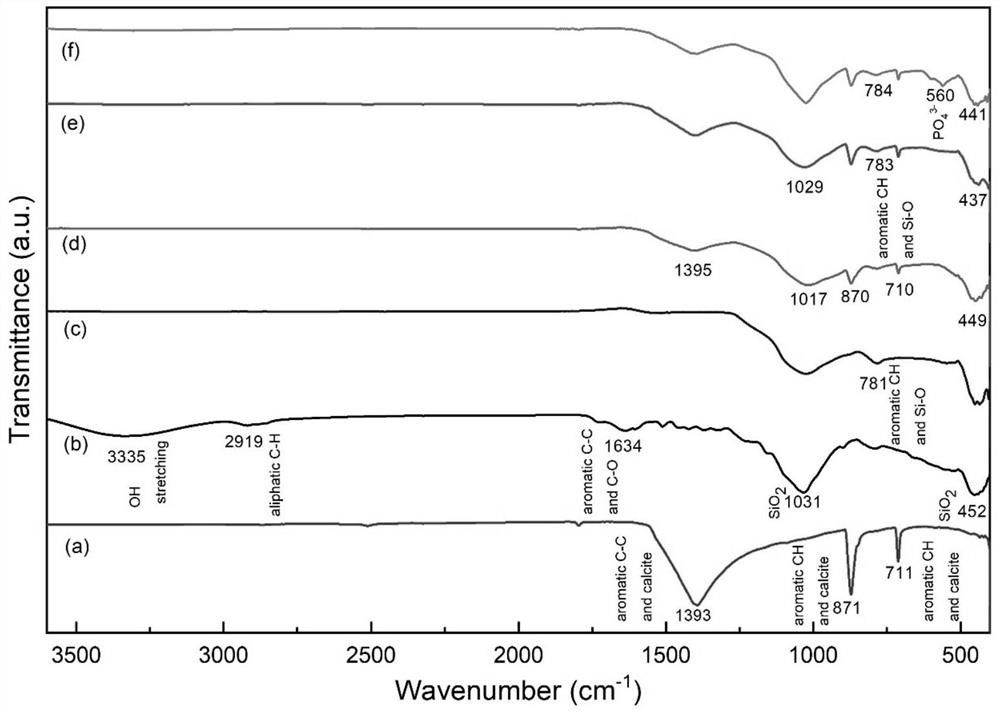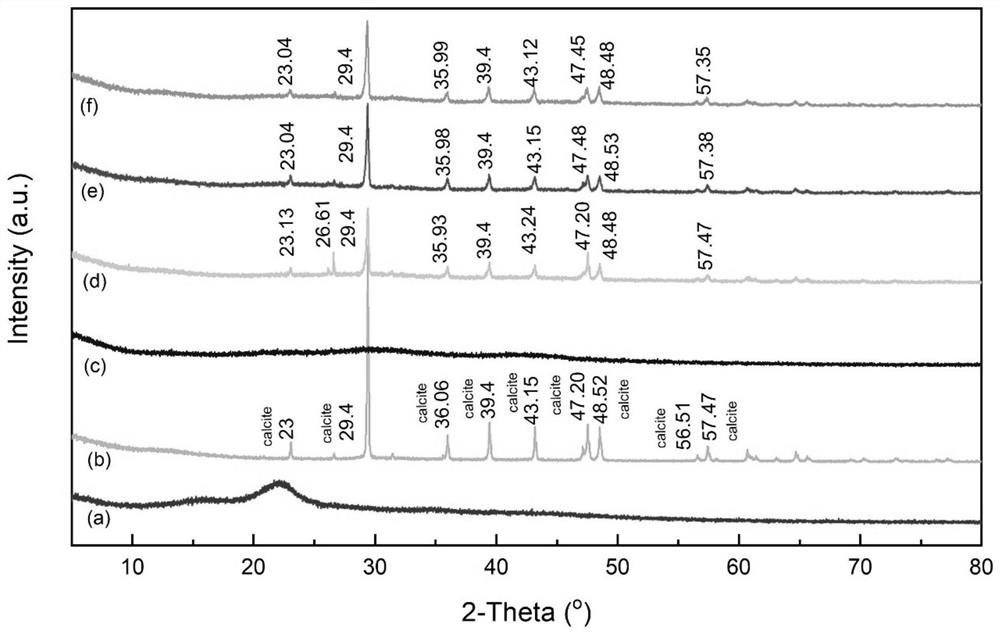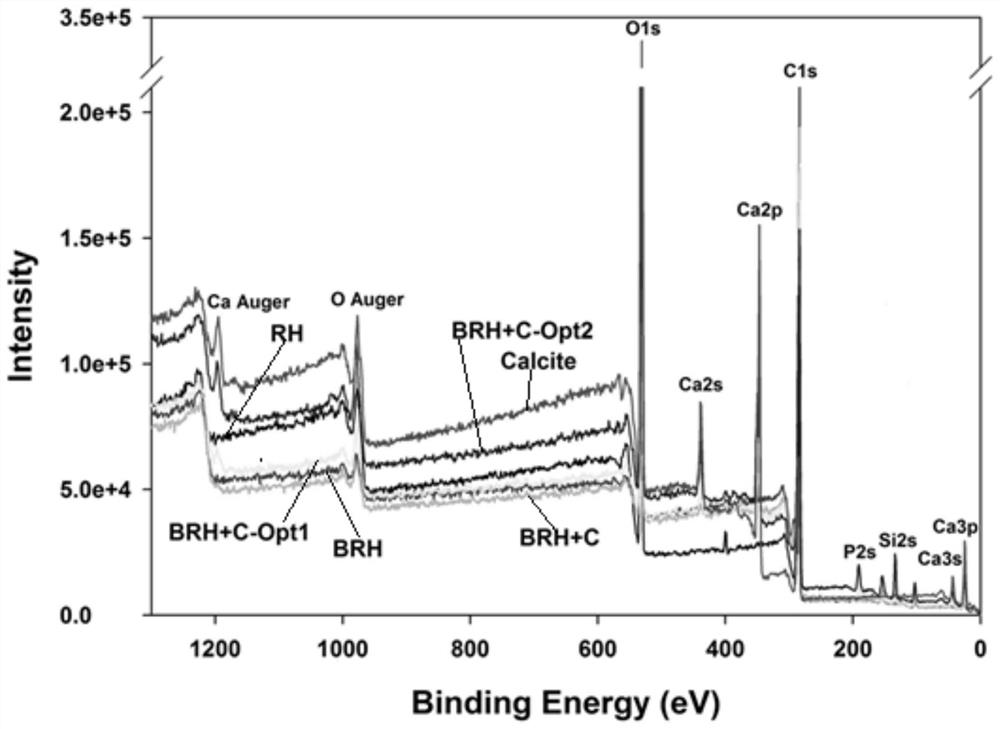Carbon-based adsorbent for removing phosphate in solution
A carbon-based adsorbent and phosphate technology, applied in the direction of adsorption of water/sewage treatment, application, matrix fertilizer, etc., can solve the problems of secondary pollution, high cost, high product treatment cost, etc., to alleviate water pollution and reduce phosphorus effect of concentration
- Summary
- Abstract
- Description
- Claims
- Application Information
AI Technical Summary
Problems solved by technology
Method used
Image
Examples
Embodiment 1
[0032] A carbon-based adsorbent for removing phosphate in water, prepared by the following method:
[0033] (1) After mixing the biomass raw material (rice husk) and calcite according to the weight ratio of 1:1, send it into the carbonization furnace for carbonization. The conditions of carbonization treatment are temperature 500 ° C, time 3 hours, and pulverization to 80-150 mesh Calcite-modified biochar was obtained.
[0034] (2) Carry out dilute alkali treatment to the calcite-modified biochar, then wash with deionized water for 3 times, and centrifuge to dry to obtain the primary carbon-based adsorbent; the dilute alkali treatment is to immerse the calcite-modified biochar in dilute lye , heated to 35° C., and stirred at 50 rpm for 2 hours; the composition of the dilute lye is: 5% sodium hydroxide, 15% sodium carbonate, and the balance of water.
[0035](3) Put 1kg of agar, 0.5kg of starch and 1kg of primary carbon-based adsorbent into 40L of deionized water, ultrasonical...
Embodiment 2
[0037] A carbon-based adsorbent for removing phosphate in water, prepared by the following method:
[0038] (1) After mixing the biomass raw material (moso bamboo) and calcite according to the weight ratio of 5:1, send them into the carbonization furnace for carbonization. The conditions for carbonization treatment are 700°C for 2 hours, and pulverize to 80-150 mesh. Calcite modified biochar.
[0039] (2) Carry out dilute alkali treatment to the calcite-modified biochar, then wash with deionized water for 5 times, and centrifuge to dry to obtain the primary carbon-based adsorbent; the dilute alkali treatment is to immerse the calcite-modified biochar in dilute lye , heated to 45° C., and stirred at 80 rpm for 1 hour; the composition of the dilute lye is: 10% sodium hydroxide, 10% sodium carbonate, and the balance of water.
[0040] (3) Put 1kg of agar, 1kg of starch and 3kg of primary carbon-based adsorbent into 60L of deionized water, ultrasonically disperse for 30 minutes, ...
Embodiment 3
[0042] A carbon-based adsorbent for removing phosphate in water, prepared by the following method:
[0043] (1) After mixing the biomass raw material (hickory shell) and calcite according to the weight ratio of 4.2:1, send them into the carbonization furnace for carbonization. The conditions for carbonization treatment are temperature 600 ° C, time 2.5 hours, and pulverization to 80-150 Calcite-modified biochar was obtained.
[0044] (2) Carry out dilute alkali treatment to the calcite-modified biochar, then wash with deionized water 4 times, and centrifuge to dry to obtain the primary carbon-based adsorbent; the dilute alkali treatment is to immerse the calcite-modified biochar in dilute lye , heated to 40° C., and stirred at 60 rpm for 1.5 hours; the composition of the dilute lye is: 8% sodium hydroxide, 12% sodium carbonate, and the balance of water.
[0045] (3) Put 1kg of agar, 0.8kg of starch and 2kg of primary carbon-based adsorbent into 50L of deionized water, ultraso...
PUM
| Property | Measurement | Unit |
|---|---|---|
| clearance rate | aaaaa | aaaaa |
Abstract
Description
Claims
Application Information
 Login to View More
Login to View More - R&D
- Intellectual Property
- Life Sciences
- Materials
- Tech Scout
- Unparalleled Data Quality
- Higher Quality Content
- 60% Fewer Hallucinations
Browse by: Latest US Patents, China's latest patents, Technical Efficacy Thesaurus, Application Domain, Technology Topic, Popular Technical Reports.
© 2025 PatSnap. All rights reserved.Legal|Privacy policy|Modern Slavery Act Transparency Statement|Sitemap|About US| Contact US: help@patsnap.com



